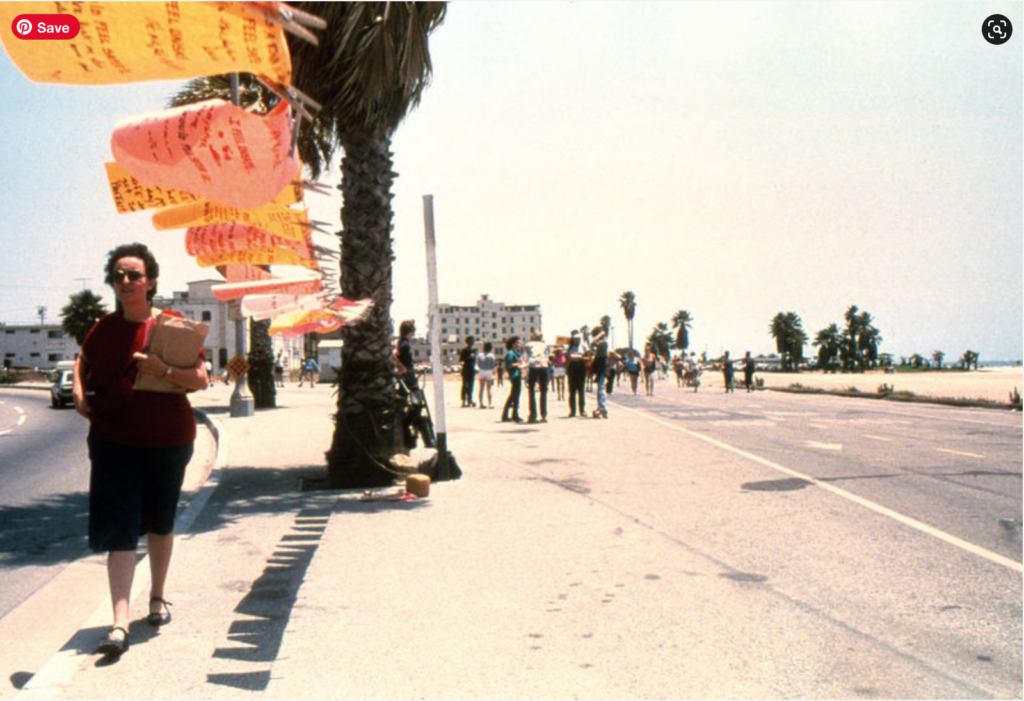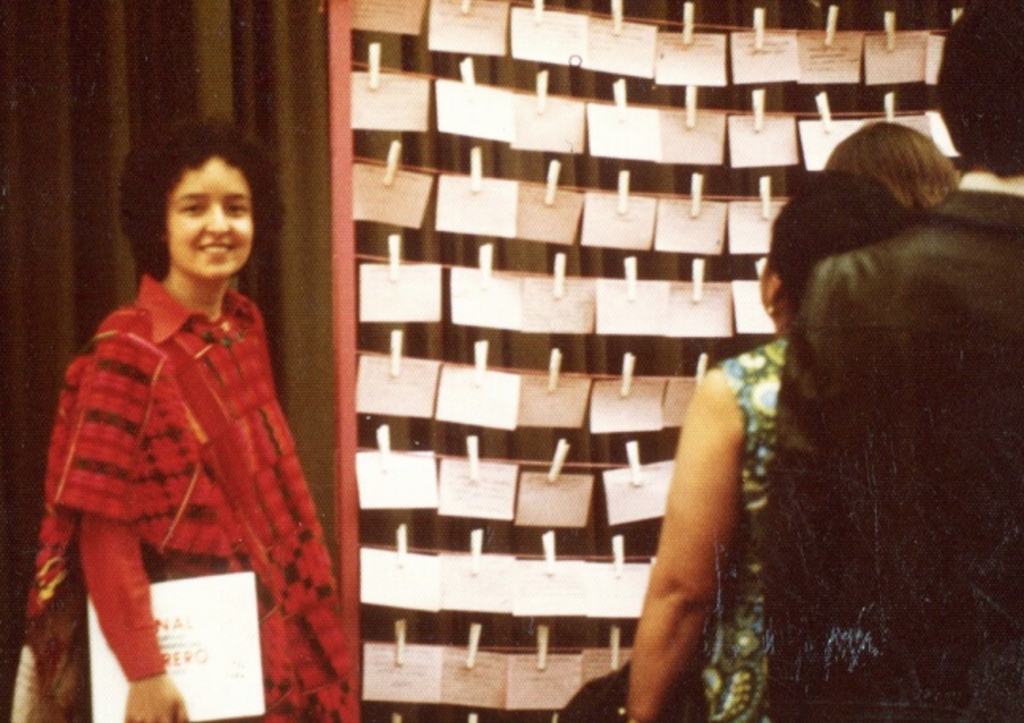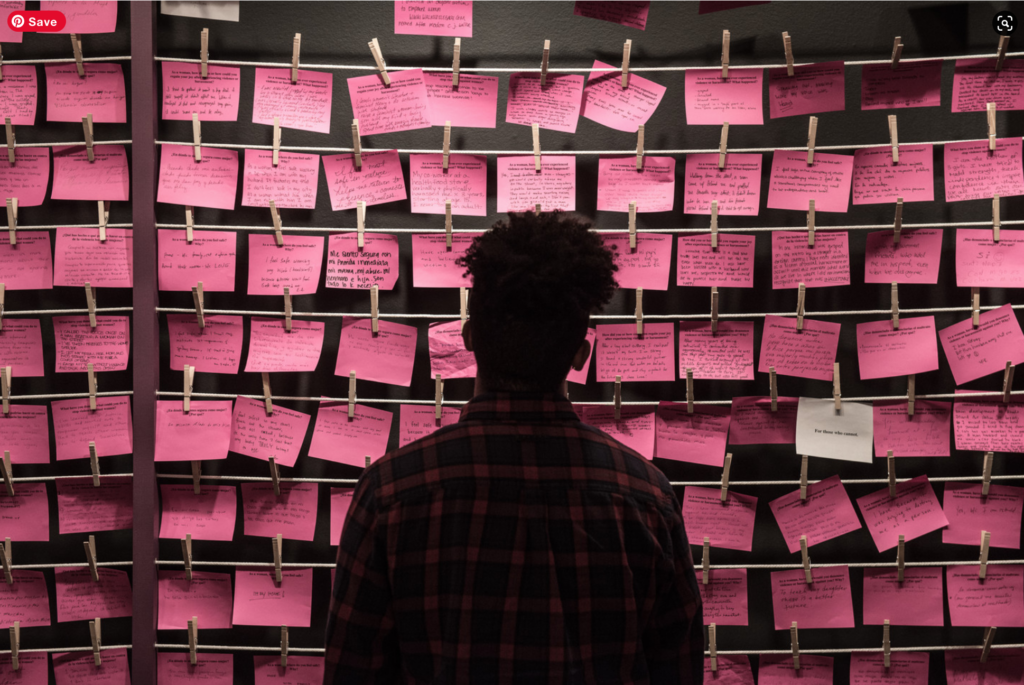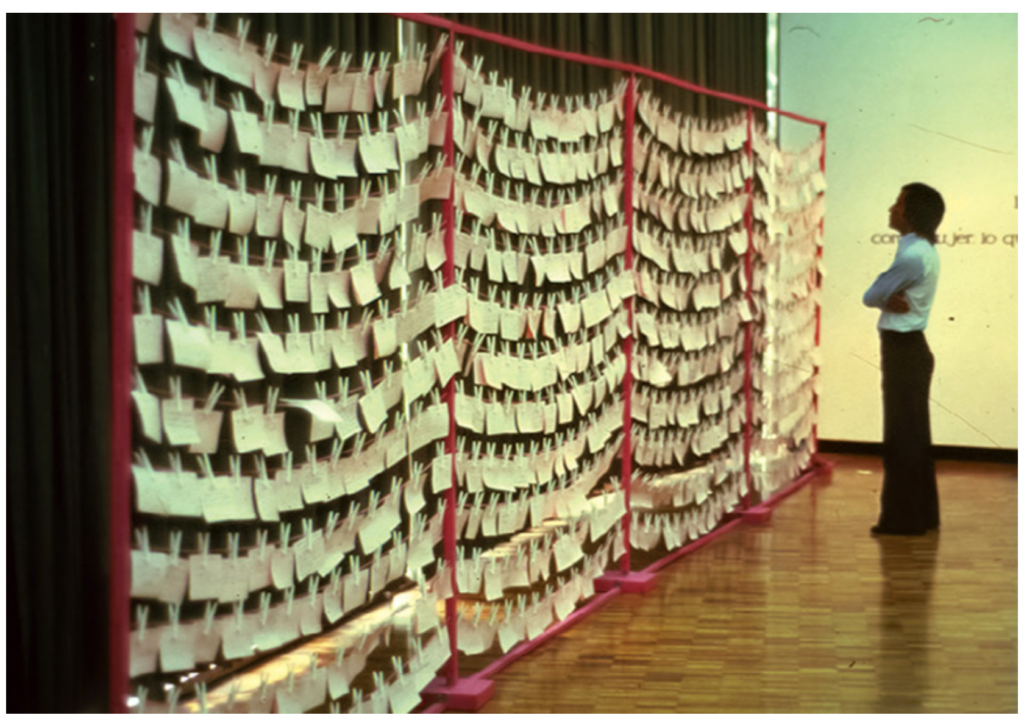


Mónica Mayer is an artist who has dabbled in drawing, photography, digital graphics and performance. Her work is characterized by being a precursor of feminist art in Mexico. Mónica Mayer was born in Mexico City in 1954. She studied visual arts at the National School of Plastic Arts of UNAM. The author began making feminist art when she was frowned upon in our country. The artists who raised their voices to express their dissatisfaction with machismo and violence against women were immediately considered lesbians and hating men. I like the idea of sharing it on this blog because I find that she is an artistic reference in the Mexican context that makes direct allusion to the idea of the complaint already in the late 70’s.
Her work “Tendedero” was exhibited for the first time in 1978 and has been replicated to this day in various educational, cultural and university institutions, even in virtual form. This work is based on hanging sheets of various sizes and colors and invites women to hang their own paper with phrases, questions, complaints or opinions. This work has been a great success because women have found a way to report and express themselves anonymously and without retaliation, especially in disadvantaged situations such as between students and teachers.
The work has been reproduced in different contexts, dates and cities throughout these 40 years.
In the mid-1970s Mónica Mayer became part of a group of artists who conceived their work within the context of artistic feminism. (POLVO DE GALLINA NEGRA) In 1978 she moved to Los Angeles to study at the Feminist Studio Workshop at the Woman’s Building. It was there that she encountered artists who were central to the US feminist art movement, such as Judy Chicago and Suzanne Lacy.
In 1978 she produced El tendedero (The Clothesline Proyect) at the Museo de Arte Moderno in Mexico City. She invited visitors to hang up small sheets of paper on which they had completed the phrase “As a woman, the thing I detest most about the city is . . .” in order to encourage a dialogue about the violence experienced by women in public spaces.
Mayer said in 2017:
What has changed in forty years?
The only thing that is different now is that I am not the only one doing it.


